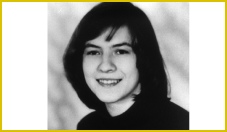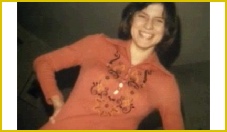












Last Gasps
Paranormal



The South’s science-based team!
Our trained investigators are here to believe you. Most importantly, we are here to solve the problem...no matter what it takes. Our services are always FREE.

© 2023 Last Gasps paranormal. Links | Terms and Conditions







The Exorcism of Anneliese Michel


Disclaimer: This work has been completed as an educational tool for students of history, religious and paranormal studies. The author wishes to discourage any use of this work in conjunction with paranormal field investigations of demons.
Presented by Kyle T. Cobb, Jr. to the audience of Dragon-Con 2014
Nos tibi credere.
A Case History
The prima facia standard for an exorcism is that the evidence must prove beyond all reason and earthly explanation that the person is possessed by a demonic spirit. This is the single requirement of the early and contemporary Catholic Church.
At least 4 elements are spelled out in the Catholic Exorcism of the Possessed
1. Ability to speak and understand languages unknown to afflicted persons.
2. Ability to tell of unknown or future events.
3. A display of Powers that go well beyond the natural human condition.
4. Other indications that cumulatively indicate demonic possession.
At first glance one of the most convincing portions of the exorcism is that Anneliese switch between German and Latin fluidly. There was also smatterings of other languages encountered. This is impressive until you understand that she was indeed fluent in Latin. Had been extensively exposed to Greek as part of the Latin studies. She was also frequently exposed to a variety of other European languages at school including English and Polish.
Many of the unknown events that Anneliese spoke of were historic. As a Latin student, she had spent many years studying Roman history. Her obsession with religion had also given her extensive knowledge of local history, local church history and local shrines.
Two of the other indicators that Alt embraced were the visons of “demonic faces,” unheard voices and unexplained sounds. As discussed earlier, visual hallucinations are often symptomatic of both epilepsy and psychosis.
So without debating the occurrence of powers beyond the human realm, at least three of the four criteria fail the standard of being beyond doubt.
With so many reasons not to do the exorcisms, the question of why the exorcisms took place has to be addressed.
It is impossible to ask the question of “why” without considering the role played by the priest. Instructions for the Rite include that the priest “be immune to any striving for human aggrandizement… and be revered not alone for his office but for his moral qualities.” In other words, the Exorcist must not be seeking fame of fortune in his efforts to remove demons from a suffering Christian.
The Rite has 3 fundament requirements of Exorcists.
1. The priest must be of advanced years and experience.
2. The priest must be humble, genuinely caring, and non-desirous of fame and fortune at the expense of the people in suffering.
3. The priest must be cleansed of all inequities through confession, contrition, and absolution.
While Renz clearly satisfies the requirement of being a seasoned priest, Alt was relatively young to become the lead exorcist in a case. According to court testimony, it was Alt rather than Renz that served as the lead exorcist. Is it possible that the relative young of Alt lead him to rush to conclusions rather than adequately investigate alternative causality?
The motivations of the Father Alt were also brought in question during the trial. As discussed earlier, Alt claimed special God-given powers. He also claimed to have seen and spoken to Christ. His “abnormal personality” and schizophrenic psychosis lead him to image himself as a lone warrior against Satan. In the criminal trial, there was testimony that asserted Alt was more interested in a future as a writer and lecturer than in helping Anneliese.
It is again important to note that at the time when Alt began his fascination with the Michel case, there was a world-wide preoccupation with demonic possession and exorcism in general thanks to the Peter Blatty book. It is certain that at the very least Alt was exposed to the phenomenon. Based on his self-appointed role as one of God’s personal defenders, it is almost certain that he embraced the war between good and evil from the book and movie sensations.
For his part, Renz seemed truly interested in helping Anneliese. In fact after the test exorcism on 3 August 1975, Renz had asserted that he had found no evidence of demonic influence. Nevertheless, Renz allowed Father Alt to proceed and continued to assist him until Anneliese’s death.
The piety of Alt is also in question. Confession, contrition, and absolution are key requirements. While the court record clearly showed that Father Renz was concerned with observing the requirements needed to conduction the Rite, it is less certain that the same level of concern was demonstrated by Alt. In fact, the records specifically note the absence of preparation.
It also appears to have been Alt’s decision to perform the exorcism in the Michel home. Without exception, the ritual is supposed to be done inside a church or on holy ground. The belief is that Holy Ground will weaken the demon. Even so, Alt followed the model from the Exorcist movie and challenged the demon off of holy ground in violation of the Rite’s directions. This decision allowed Anneliese’s decline and eventual death to occur beyond the oversight of additional clergy.
Anneliese Michel was brilliant young girl with a promising future. Unfortunately she was burdened with a broken body and mind.
Ignoring her medical condition, Anneliese’s parents and representatives of the Catholic Church made questionable decisions that ultimately led to a death that should have been avoided.
—--------------------------
Medical Conditions explained
Grand mal seizures
Grand mal seizures have two stages:
1. Tonic phase. Loss of consciousness occurs, and the muscles suddenly contract and cause the person to fall down. This phase tends to last about 10 to 20 seconds.
2. Clonic phase. The muscles go into rhythmic contractions, alternately flexing and relaxing. Convulsions usually last for less than two minutes.
The following signs and symptoms occur in some but not all people with grand mal seizures:
Aura. Some people experience a warning feeling (aura) before a grand mal seizure. This warning varies from person to person, but may include feeling a sense of unexplained dread, a strange smell or a feeling of numbness.
A scream. Some people may cry out at the beginning of a seizure because the muscles around the vocal cords seize, forcing air out.
Loss of bowel and bladder control. This may happen during or following a seizure.
Unresponsiveness after convulsions. Unconsciousness may persist for several minutes after the convulsion has ended.
Confusion. A period of disorientation often follows a grand mal seizure. This is referred to as postictal confusion.
Fatigue. Sleepiness is common after a grand mal seizure.
Severe headache. Headaches are common but not universal after grand mal seizures.
Pleurisy
Pleurisy is a condition in which the pleura — a membrane consisting of a layer of tissue that lines the inner side of the chest cavity and a layer of tissue that surrounds the lungs — becomes inflamed and causes sharp chest pain when breathing. The only treatment for Pleurisy is pain control.
Tuberculosis
Tuberculosis (TB) is a bacterial infectious disease that targets the lungs and is spread from one person to another through tiny droplets released into the air via coughs and sneezes.
Some people have a natural resistance to the symptoms of TB. As a result, doctors classify it in two ways:
Latent TB. The TB infection is present but the bacteria remain in your body in an inactive state and cause no symptoms.
Active TB. The infection causes sickness and can be spread to others
Signs and symptoms of active TB include:
Coughing that lasts three or more weeks
Coughing up blood
Chest pain, or pain with breathing or coughing
Unintentional weight loss
Fatigue
Fever
Night sweats
Chills
Loss of appetite

Anneliese



Anneliese
| Paranormal Books |
| Apparitions |
| Cryptids |
| Demons |
| Orbs |
| Poltergiest |
| Residual Hauntings |
| Shadow People |
| West Demons |
| Ouija and Zozo |
| Exorcisms |
| Anneliese Michel |
| Ronald Hunkeler |
| Anna Ecklund |
| LaToya Ammons |
| George Lukins |
| Christian Demon texts |
| Roman Rite 1614 |
| Roman Rite 1998 |
| Eastern Demons |
| FAQ |